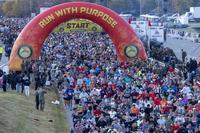Have you tried an ice bath or cold-water immersion (CWI) after a workout, either for recovery benefits or just to test your mettle? There is an industry focused on creating and selling cold water containers, from barrels and plastic tubs to freezer-like tubs, selling from the hundreds of dollars up to $10,000.
The concept of using cold for healing dates back to ancient Egyptian and Roman civilizations, which used cold water and snow to help relieve muscle pain. Fast-forward to the present day and you have ice baths, which are popular among athletes at all levels.
Ice baths require a bathtub or large container filled with cold water and ice. The athlete then submerges their entire body in the cold water for a set period, usually between 10 and 15 minutes.
Are Ice Baths Good or Bad For You?
As with any extreme temperature (hot or cold), too much is deadly. Hypothermia and frostbite are potential outcomes if you are careless and get into water in the mid-30 degrees Fahrenheit level or even stay too long in water in the 50- to 60-degree range.
If you are doing this for reasons besides relieving muscle soreness, joint inflammation and cooldown recovery, you must remember there is a fine line between mental toughness and stupidity. Any time there is a potential for death or severe injury, you have crossed that line.
Some will argue that the benefits of CWI are not as useful for recovery as a healthy meal and a good night's sleep, even though jumping in cold water will jolt you and make you more alert and energetic for the next several minutes.
Who Should Use Them?
Ice baths can reduce muscle soreness and fatigue, reduce inflammation and offer some degree of recovery. If you are an endurance athlete who competes in several events over the course of a weekend, using the ice bath or cold water immersion after competition can help you, especially if you're hot from exertion. If the weather is hot and you still have to compete in more training or events on the same day during a weekend tournament, cold water immersion can help reduce body heat and fatigue. I have always said that half of fatigue is caused by excess body heat. Reduce body heat, and you may find a second wind.
Also, if you are an "easy gainer" who can quickly put on mass after lifting but does not want to gain weight, an ice bath or cold water immersion can help prevent weight gain. Cooling the body will require you to burn more calories to warm up and increase your circulation to take the warm core temperature to the extremities.
This is how the post-workout recovery and inflammation reduction is improved through the ice bath process. This is good news for bodyweight class athletes or those of us trying to stay at a particular height and weight standard. Using CWI can reduce pain, fatigue and aid in recovery from strength training, allowing you to avoid gaining mass and stay within the range of your competition and goal weight.
Who Should Not Use Them?
While there are benefits to cold water immersion, cold showers and ice baths, there are potential risks to consider. People with poor circulation or high blood pressure should avoid taking ice baths, as the cold water can constrict blood vessels, increase blood pressure and even further reduce circulation during immersion. Additionally, it's important to take frequent breaks to ensure that your body isn't exposed to the cold water for too long.
Also, people who are training hard to build muscle should not use ice baths. Science has shown that muscle mass athletes, hard gainers and bodybuilders should not consider a program where cold water is part of recovery, as it can reduce hypertrophy (muscle building) gains.
The answer depends on the individual, but there are several precautions to consider before taking an ice bath.
First, keep in mind that you should never take an ice bath without proper supervision. Make sure you consult with a doctor or trainer before trying an ice bath.
Second, don't stay in the ice bath for too long. Ten to 15 minutes is the maximum recommended time for an ice bath. Going over this time can put you at risk for hypothermia or other health complications.
Third, make sure the water isn't too cold. The water should be between 50-60 degrees Fahrenheit. If the water is too cold, it can cause muscle spasms, dizziness, panic or disorientation. If you want to start slowly, end your normal shower with the coldest water you can get from the tap for 1-2 minutes. This will help you learn some of the breathing control methods taught by gurus like Wim Hof.
If you're looking for a way to improve your recovery and boost your performance, ice baths can be a great addition to your recovery routine. Just make sure to listen to your body and take the proper precautions to ensure your safety.
At the end of the day, it's up to you whether the potential benefits of an ice bath outweigh the risks. If you give it a try, make sure to take all the necessary precautions. With proper care, an ice bath can be a great way to help you reach your fitness goals and recover faster.
Other Studies on Cold Water Immersion:
https://www.ncbi.nlm.nih.gov/pmc/articles/PMC4594298/
https://pubmed.ncbi.nlm.nih.gov/25760154/
-- Stew Smith is a former Navy SEAL and fitness author certified as a Strength and Conditioning Specialist (CSCS) with the National Strength and Conditioning Association. Visit his Fitness eBook store if you're looking to start a workout program to create a healthy lifestyle. Send your fitness questions to stew@stewsmith.com.
Want to Learn More About Military Life?
Whether you're thinking of joining the military, looking for fitness and basic training tips, or keeping up with military life and benefits, Military.com has you covered. Subscribe to Military.com to have military news, updates and resources delivered directly to your inbox.


















